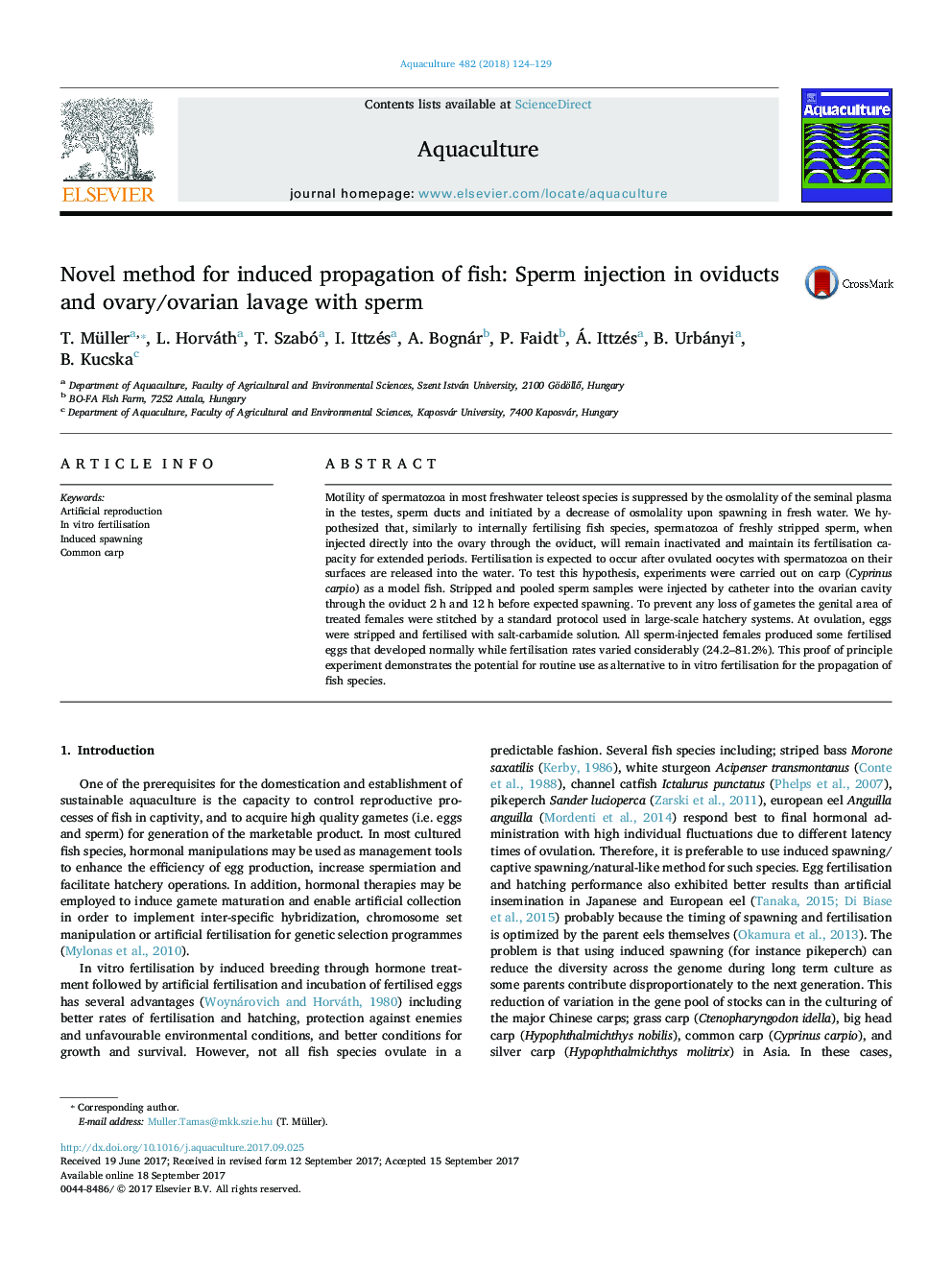| Article ID | Journal | Published Year | Pages | File Type |
|---|---|---|---|---|
| 5539110 | Aquaculture | 2018 | 6 Pages |
Abstract
Motility of spermatozoa in most freshwater teleost species is suppressed by the osmolality of the seminal plasma in the testes, sperm ducts and initiated by a decrease of osmolality upon spawning in fresh water. We hypothesized that, similarly to internally fertilising fish species, spermatozoa of freshly stripped sperm, when injected directly into the ovary through the oviduct, will remain inactivated and maintain its fertilisation capacity for extended periods. Fertilisation is expected to occur after ovulated oocytes with spermatozoa on their surfaces are released into the water. To test this hypothesis, experiments were carried out on carp (Cyprinus carpio) as a model fish. Stripped and pooled sperm samples were injected by catheter into the ovarian cavity through the oviduct 2Â h and 12Â h before expected spawning. To prevent any loss of gametes the genital area of treated females were stitched by a standard protocol used in large-scale hatchery systems. At ovulation, eggs were stripped and fertilised with salt-carbamide solution. All sperm-injected females produced some fertilised eggs that developed normally while fertilisation rates varied considerably (24.2-81.2%). This proof of principle experiment demonstrates the potential for routine use as alternative to in vitro fertilisation for the propagation of fish species.
Related Topics
Life Sciences
Agricultural and Biological Sciences
Aquatic Science
Authors
Tamás Müller, László Horváth, Tamás Szabó, István Ittzés, Attila Bognár, Petra Faidt, Áron Ittzés, Béla Urbányi, Balázs Kucska,
